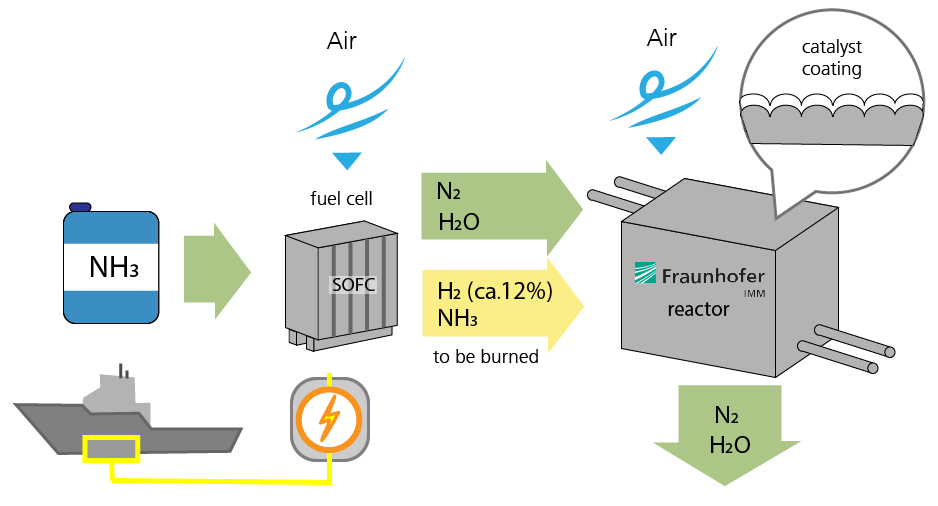Project partner and research organization Fraunhofer IMM is a central part of the German research and development community. Their work with micro-system technology is recognized well beyond European borders, and they are now working with a ground-breaking catalytic converter for ShipFC.
The process of generating electricity from ammonia is similar to that of a hydrogen-based power plant. Ammonia (NH3) is fed into the fuel cell anode. The air being fed into the fuel cell cathode, allows the ammonia to be oxidised and form water and nitrogen at the anode side. This produces electrical energy. The gas stream leaving the anode contains water, nitrogen, a minor amount of hydrogen and possibly a negligible amount of unconverted ammonia.
This residue is then fed into the catalytic converter developed by Fraunhofer IMM. Here, air is introduced, and the residue comes into contact with a catalyst layer deposited onto the internal surface of the reactor. This triggers a chemical reaction. Ultimately, the only end products are water and nitrogen. An optimal reaction process will produce no or only negligible amounts of environmentally harmful nitrogen oxides.

Long experience from a wide variety of applications
“The temperature of the gases that flow through the catalytic converter should probably be around 500 degrees Celsius for the waste gas purification process to be as efficient as possible,” explains Dr. Gunther Kolb, Head of Business Division Energy. Fraunhofer IMM researchers have decades of experience in developing reactors including catalysts for a wide variety of applications in the transport and mobility sector.
The Mainz-based institute has nine test rigs, but purifying waste gas from ammonia fuel cells with a capacity of 2 megawatts is still a technological challenge. “We have to develop our exhaust gas purification catalyst technology further, and the catalytic converter for a ship is obviously much bigger than that of a normal car,” says Kolb.
Believe in ammonia
— The maritime industry is showing great interest in ammonia as a potential fuel. The research and development environment that we’re part of is indeed following this up closely in numerous projects. The preliminary results in many of them are confirming our impression that ammonia definitely is part of the maritime future fuel mix, says Kolb.

